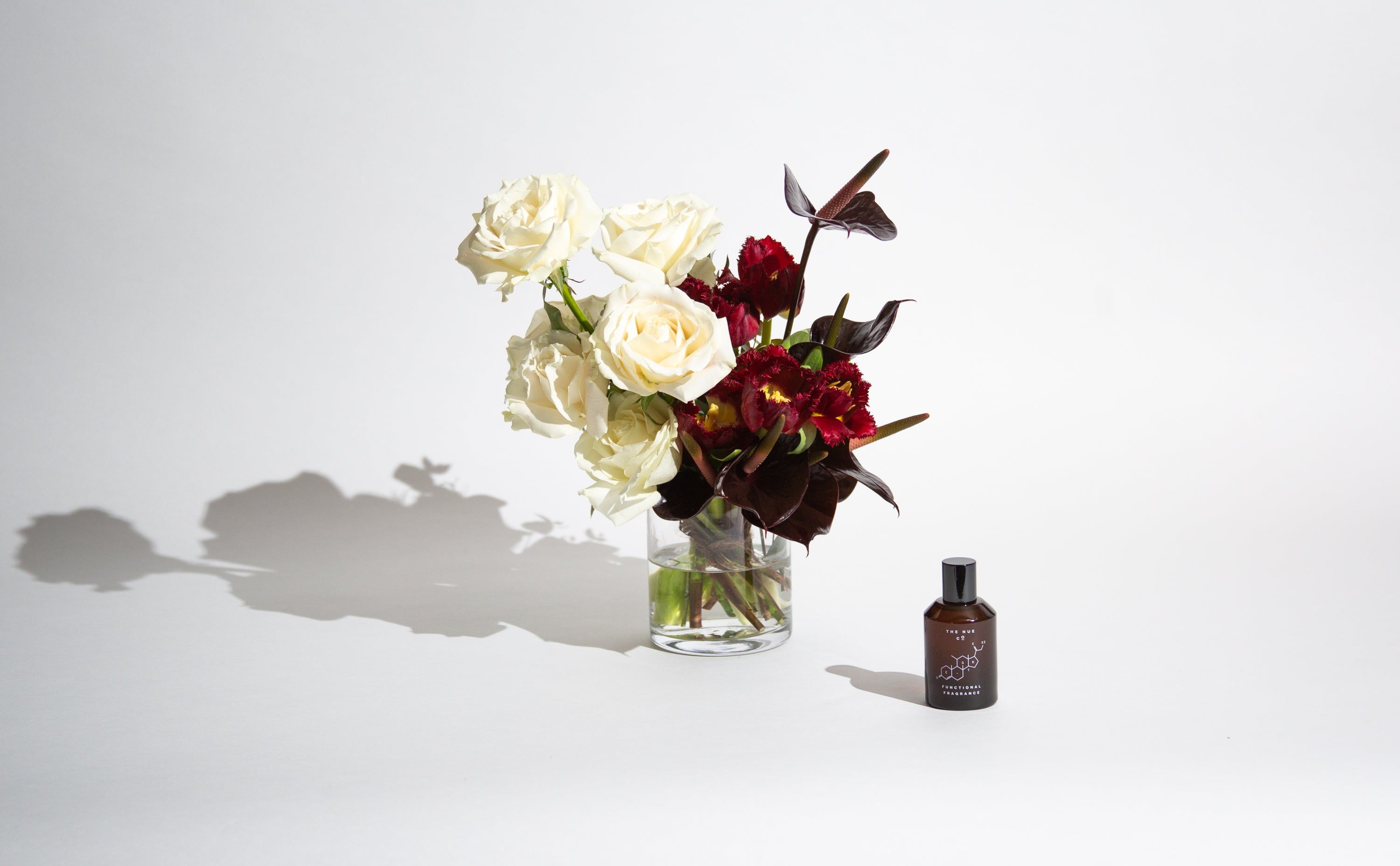
Florals With Function: the stories behind the blooms
Curated online floristry website Floom explains the rich histories and symbolism of the flowers in our bespoke Valentine’s Day bouquet.
For an exclusive Valentine’s Day partnership, curated online floristry website Floom created a limited-edition bespoke bouquet to reflect the notes in FUNCTIONAL FRAGRANCE. Burgundy fringed tulips and dark anthuriums mirror the woody, spicy and smoky notes while white roses highlight the clean top notes.
We asked them to explain the history, symbolism and origins of the dramatic trio of blooms they used for the gift set that helps to make stressful days easier to handle.
The tulip originated in Persia and the vibrant flowers of the tulip were first popularised during the days of the Ottoman empire. One 16th century ruler, Sultan Selim II, was particularly obsessed with them, cultivating tulip bulbs in numbers that stretched into the hundreds of thousands—which goes someway towards illustrating why the flower was seen at the time as a symbol of abundance and indulgence. This also explains why the period in which the Ottoman Empire was at its most wealthy is often known as the Tulip Era.
The tulip is still one of the most popular and well-loved flowers today, celebrated across the globe in various major cities with a strong Dutch heritage. The Dutch association with tulips is thought to have begun in earnest when the Flemish botanist Carolus Clusius began planting them towards the tail-end of the 1500s and discovered that they were surprisingly tolerant of the Low Countries’ conditions. Bursting with saturated color in a way that few other European plants could match, they actually went on to inspire ‘Tulip Mania’—a period in which the demand for bulbs reached such extraordinarily high levels that, during its peak of 1637, some tulip bulbs sold for more than ten times the annual income of a skilled craftsman.
The ‘flamingo flower’, ‘tail flower’ or anthurium hails from the tropical regions of South America, thriving in warm and humid environments. There are over 1,000 different varieties and the colored part is often mistaken as the flower yet it’s actually its spathe—a leaf to attract insects.
The traditional meaning of the anthurium is hospitality, due to the open, inviting nature of its heart-shaped flowers.
Whether it be for their association with love, Valentine's Day, romance, war or politics, or for their storied linkage with beauty, roses have a long, complex, and colorful history. According to fossil evidence, the rose is a colossal 35 million years old—boasting 150 species found throughout the Northern Hemisphere, including northern Africa—but it was only 5,000 years ago that the garden cultivation of such stems started.
During the Roman period, roses were grown extensively in the Middle East for medicinal purposes as a source of perfume and as confetti at special occasions. But it was in post-Roman times that the rose found its symbolic value in the 15th century. While the white rose was symbolic of York, the red was synonymous with the house of Lancaster—collectively they were associated with the “War of the Roses”.
By the 17th century, roses—and rose water—were in high demand and used widely as legal tender, meaning you could trade your anti-inflammatory rose water drops for food. It was not long before Napoleon's wife Josephine established an extensive collection of roses at Chateau de Malmaison, an estate seven miles west of Paris, that was painted by Pierre Joseph Redoute and is still considered one of the finest records of botanical illustration.
Skip to the late 18th century. Cultivated roses were introduced into Europe from China, the ancestry from which most modern roses stem and still a hot topic of interest for botanical experts worldwide.
According to many researchers, roses have been losing their evocative scent purely down to the fact that many gardeners have favoured the appearance of the stems while breeding, rather than their aroma (in turn, losing a crucial enzyme RhNUDX1, that generates a chemical called monoterpene geraniol, one of the sweetest-smelling parts of rose oil).
Roses come in a vast array of vibrant hues from classic red and pink, through to orange, yellow, lavender and white. While red roses are traditionally associated with love and romance, pink are widely regarded as a sign of gratitude and appreciation—perfect to send to a loved one or a friend—and white are tied to the themes of purity, innocence and sympathy. Meanwhile, roses of the yellow variety are a sign of both joy and friendship, and orange channel the welcome traits of enthusiasm, passion and desire. But when it comes to the rose that possesses the most power, look to those of the lavender variety—consider them your Cupid’s bow for they’re said to represent love at first sight.



